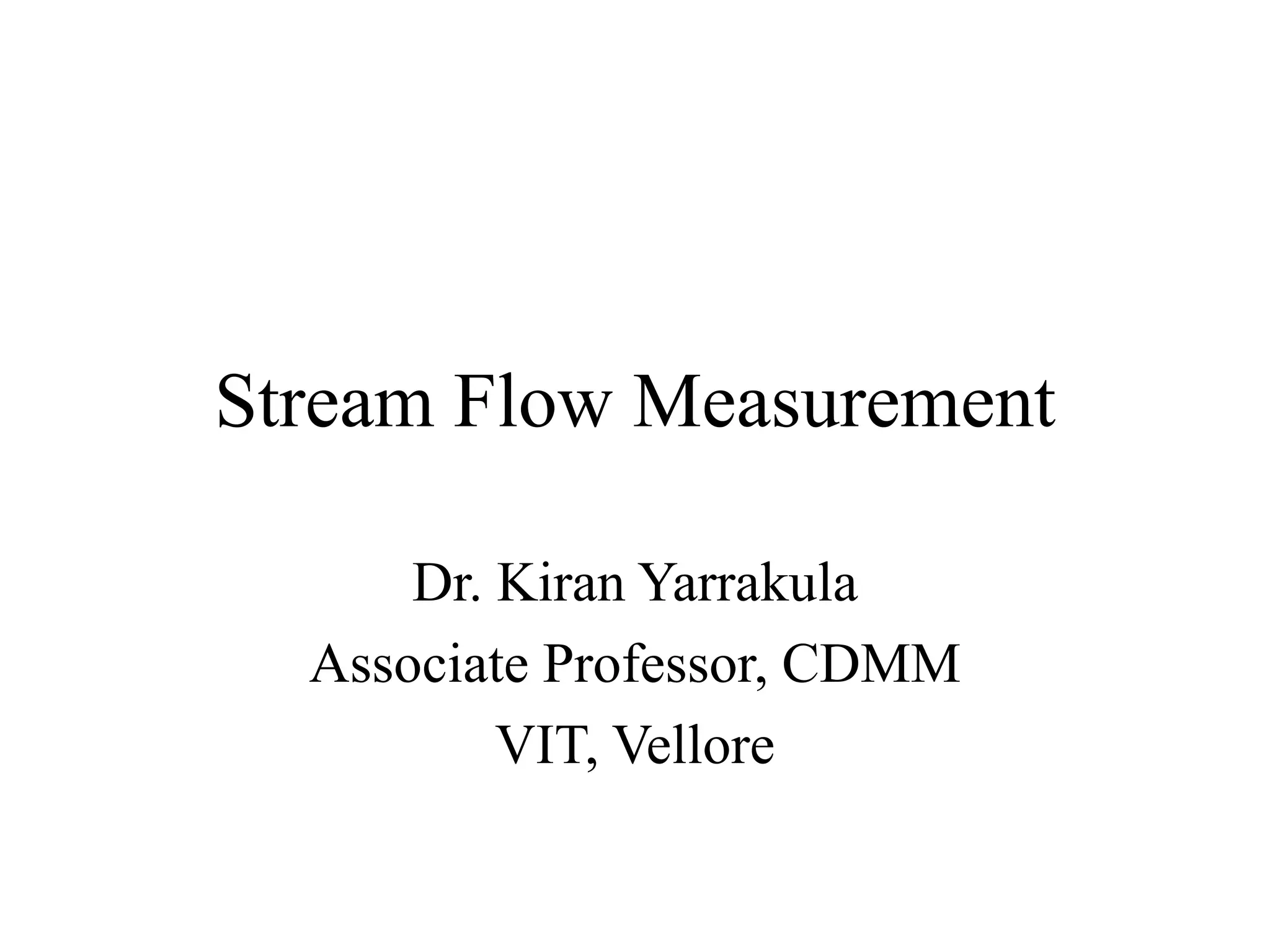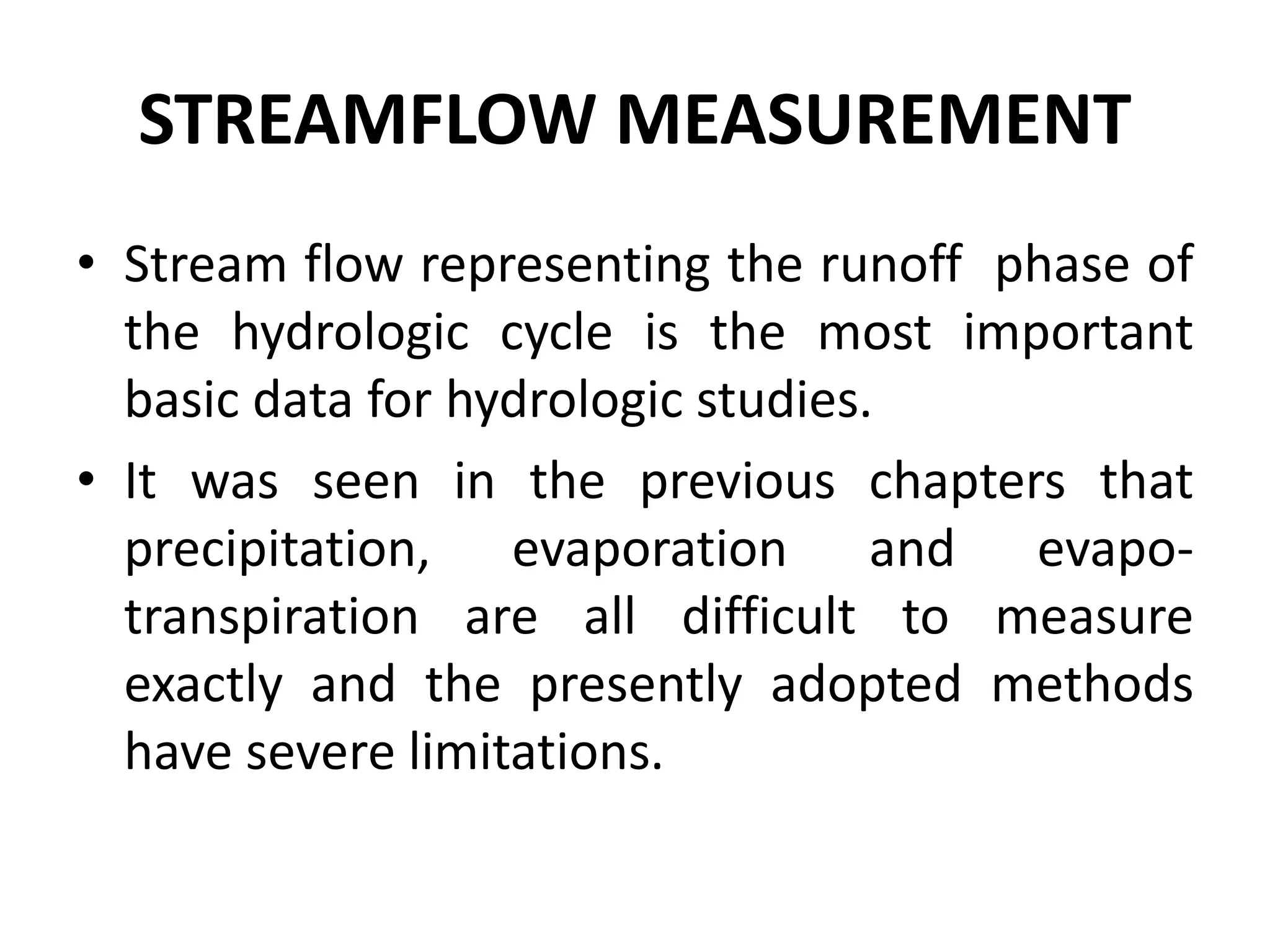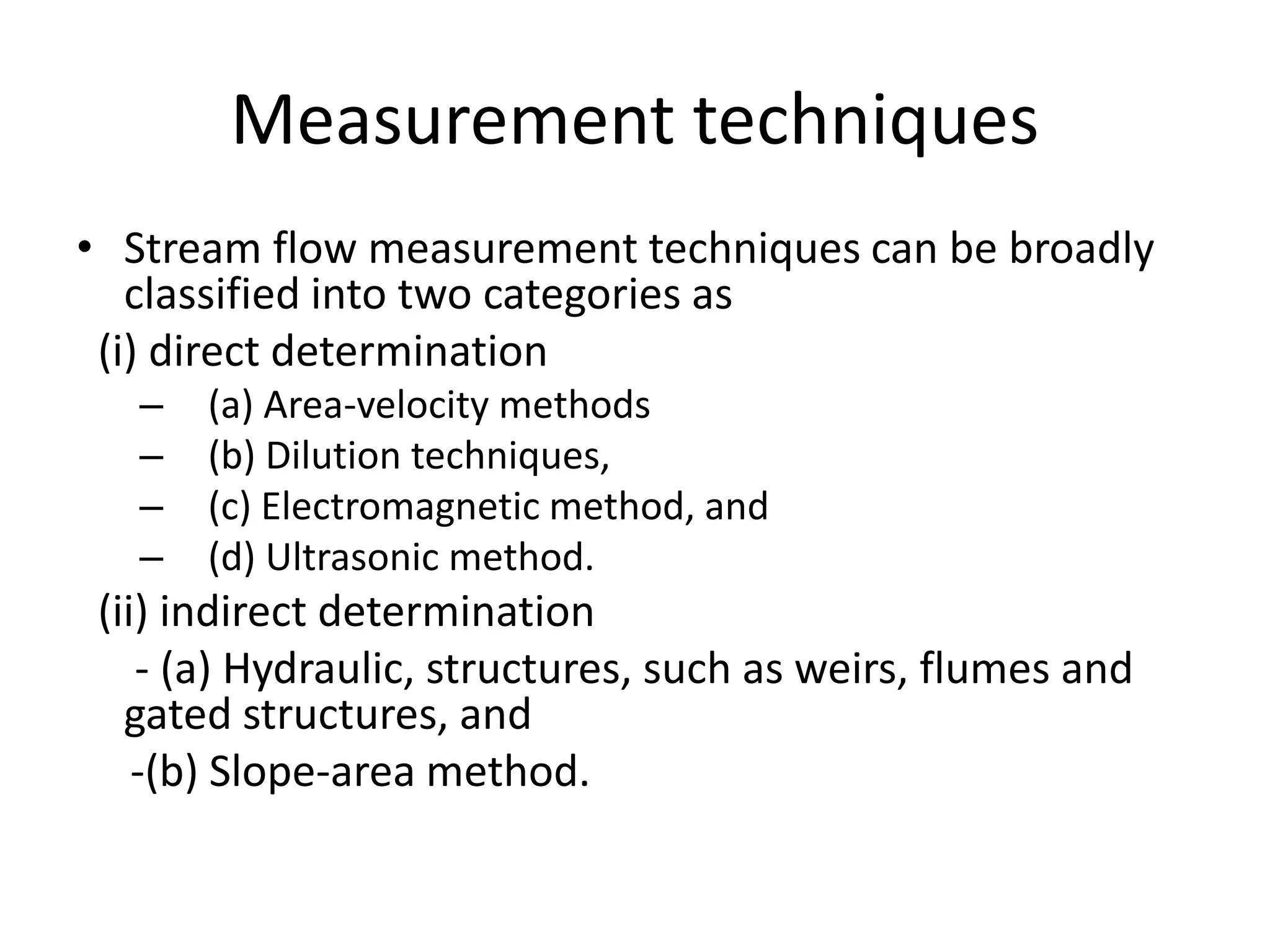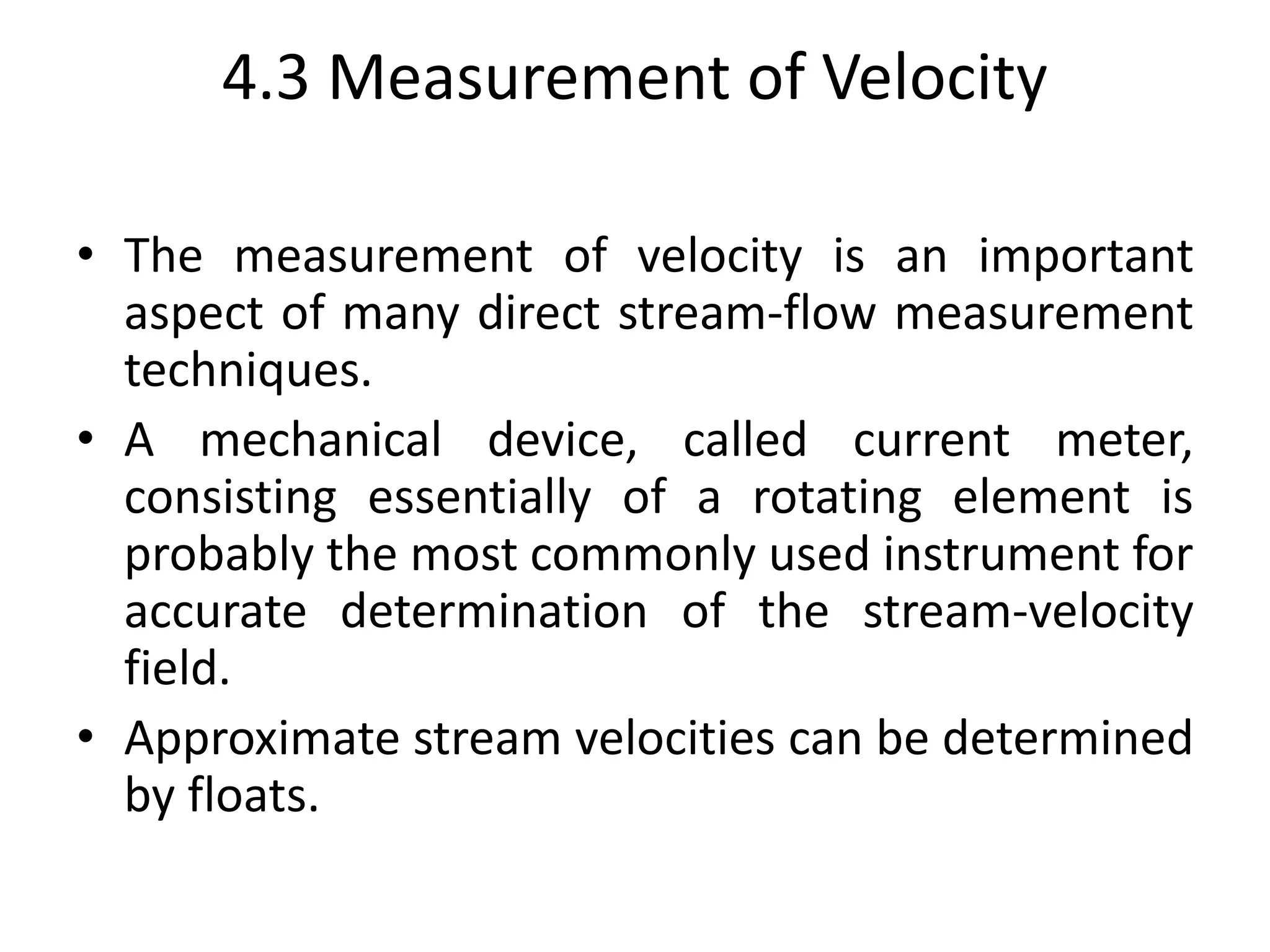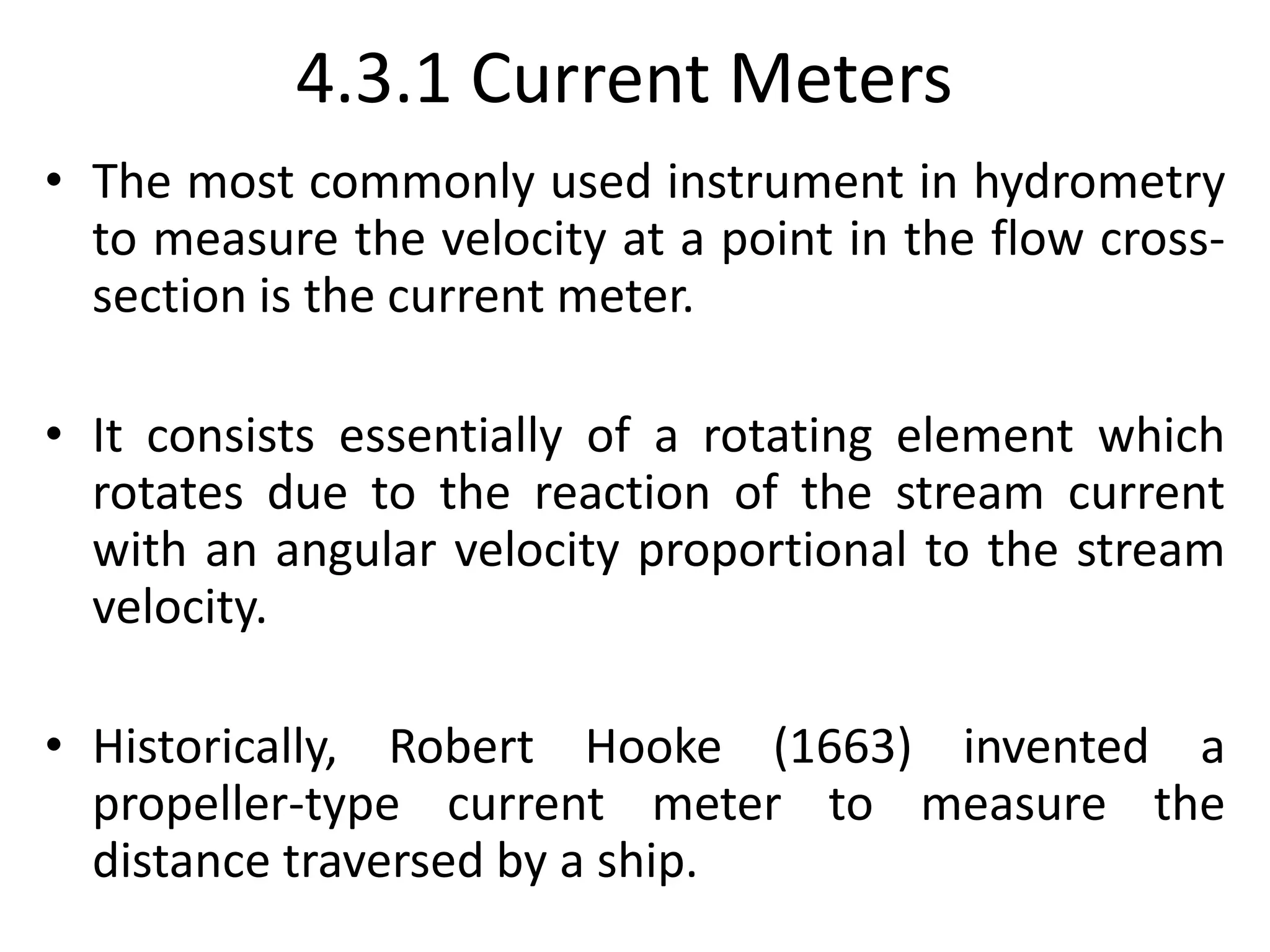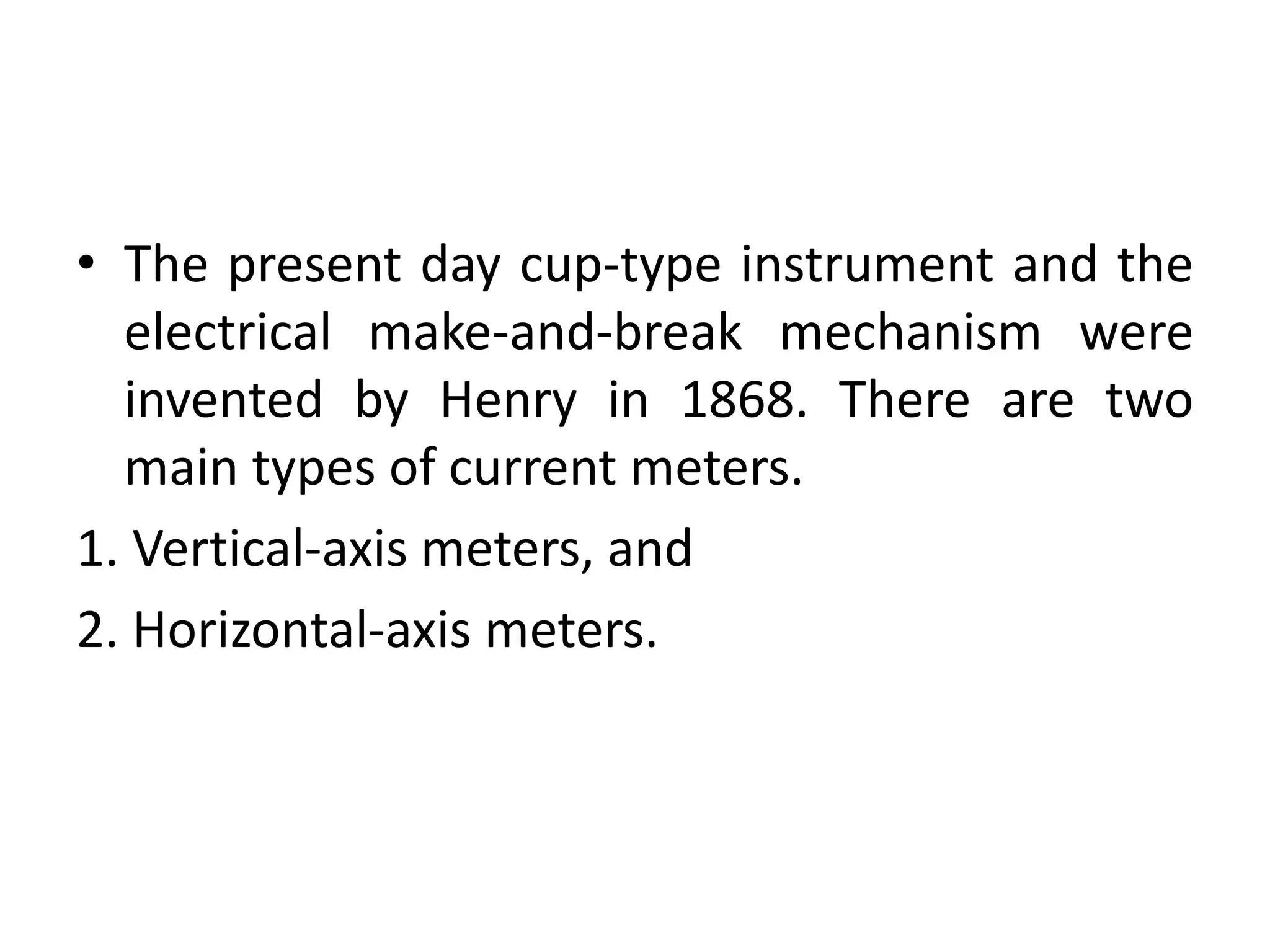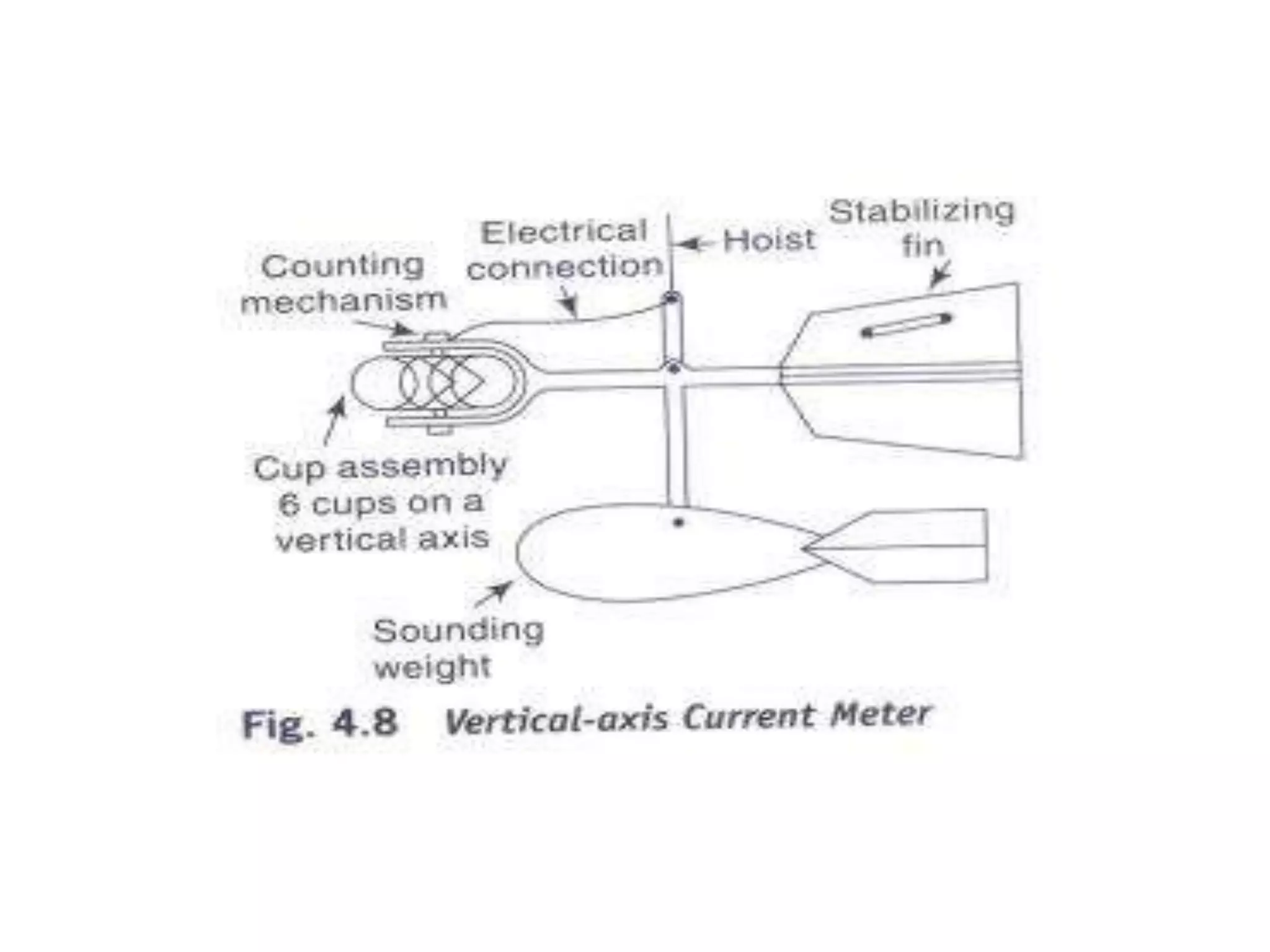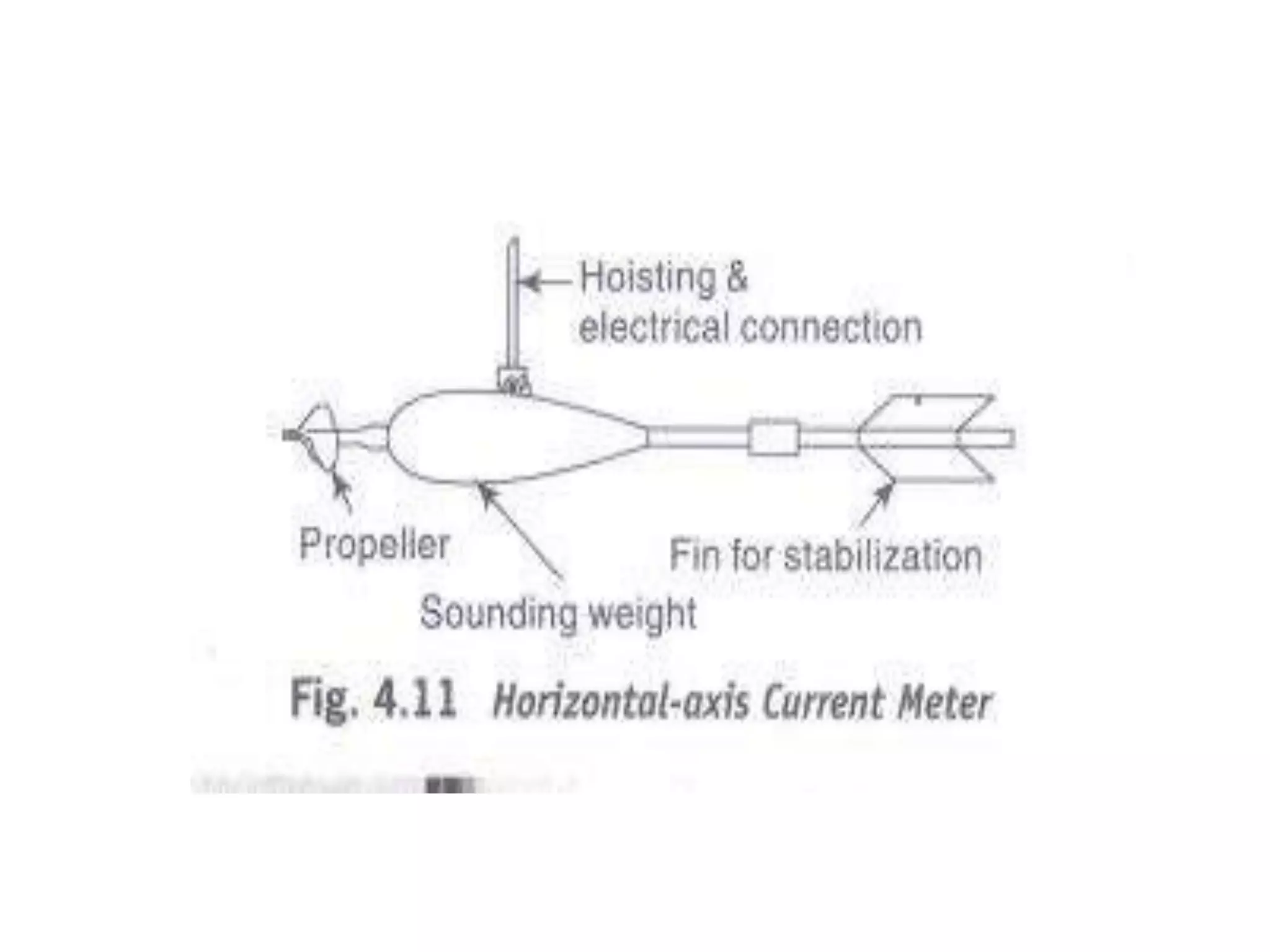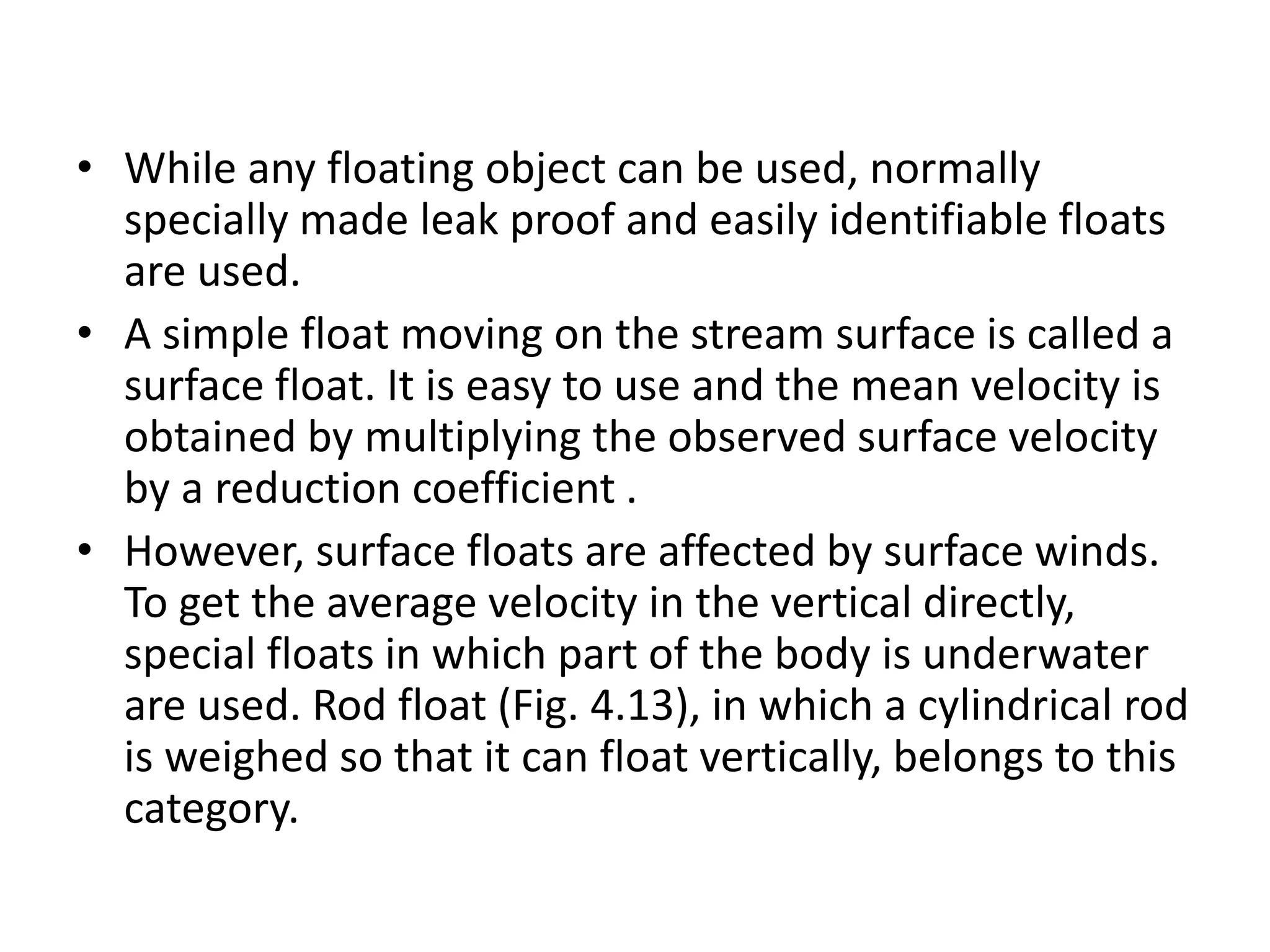This document discusses techniques for measuring stream flow. There are two main categories of measurement: direct determination using area-velocity methods, dilution techniques, electromagnetic and ultrasonic methods; and indirect determination using hydraulic structures like weirs, flumes and gates or slope-area methods. Velocity is an important aspect measured using current meters, which are the most commonly used instruments. Current meters consist of rotating cups or propellers connected to mechanisms that count revolutions to determine flow velocity. Floating objects can also be used to estimate surface velocities. Accurate stream flow measurement is important for hydrologic studies.
